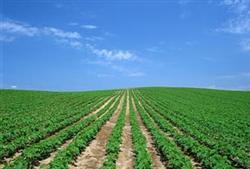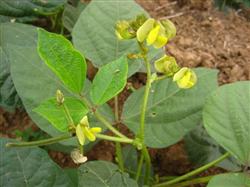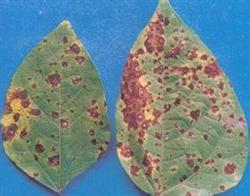Main diseases and control methods of mung bean

With the development of market economy, the planting area of mung bean is expanding year by year, and the diseases of mung bean are also increasing gradually. the following are the main diseases and control of mung bean. First, virus disease (1) symptoms the disease is very common, especially in the seedling stage. The main manifestations in the field are mottled flowers and leaves, wrinkled flowers and leaves, and so on. When the disease is mild, the plants with mosaic and mottled symptoms appear at the seedling stage. When the disease was serious, the seedlings wrinkled and reduced the leafy mosaic plants, and the leaves were deformed, wrinkled, mesophyll raised, forming blister spots, and there were obvious yellow and green wrinkled mosaic. (2) the condition of the disease. Sowing diseased seeds causes direct disease. two。 There are a large number of aphids in mung bean field and the disease is serious. 3. Wind and rain plus weather, causing friction between plants, aggravating the infection. (3) Prevention and control methods 1. Disease-free or disease-tolerant varieties were selected to control aphids. two。 At the initial stage of the disease, 20% virus death or 20% virus A500 times liquid spray was used to prevent and cure the disease, once every 7-10 days, usually 2-3 times. Second, leaf spot disease (1) when the symptom mung bean occurs, there are small water-like spots on the leaves at first, then expand into round or irregular brown spots, and later become large necrotic spots, resulting in dry or fallen leaves. (2) the occurrence of the disease is closely related to temperature and humidity. Under the condition of relative humidity 85%-90%, the pathogen conidia germinated fastest when the temperature was 25-28 ℃, and the mycelium grew most vigorously and the disease developed most rapidly when the temperature reached 32 ℃. In our city, the disease is more serious when the mung bean is in bloom and at high temperature after rain. (3) Prevention and control methods 1. Selection of disease-resistant varieties, reasonable close planting to ensure good ventilation in the field. two。 Strengthen field management and pay attention to draining or dispersing soil moisture after heavy rain. 3. At the initial stage of the disease, 70% mancozeb solution was selected, or 41% special effect germicidal king 2000 times solution and 20% Landy 500 times solution were sprayed for prevention and treatment. Spraying once every 7-10 days for 2 times can effectively control the epidemic of the disease. Third, root rot (1) the heart leaves turn yellow at the beginning of the symptoms. If the root system is pulled out, it can be seen that the lower part of the stem and the upper part of the main root are dark brown and slightly sunken. When the stem is cut open, the vascular bundle turns dark brown. When most of the roots rot, the plants wither and die. (2) Prevention and control methods 1. Select disease-resistant varieties and rotate with non-legume crops for more than 3 years. two。 Ploughing in time, drainage after rain, raise the ground temperature. 3. At the initial stage of the disease, 75% chlorothalonil was sprayed with 1000 times of methyl topiramate, and sprayed once every 7 to 10 days for 2 times. If the above chemicals are used for irrigation, the effect is better.
- Prev

Pay attention to the flowering disease of mung bean
At present, mung bean has entered the flowering and entrainment period, and diseases and insect pests have been found in some plots, among which mung bean leaf spot, virus disease, bacterial blight and soybean aphid are more harmful to mung bean. 1, mung bean leaf spot: the main harm to the leaves, there are light brown or dark brown spots on the leaves, with obvious yellow circles on the edges.
- Next

Green bean leaf spot disease control notice
Mung bean leaf spot disease is a serious disease harmful to mung bean, can make mung bean leaves dry, quality decline, yield reduction, the following is to introduce the symptoms of mung bean leaf spot disease, transmission routes, disease conditions and control methods. The disease symptoms mungbean leaf spot disease mainly harm mungbean, harm parts for leaves...
Related
- The first cup of black tea in spring, the flavor and history of tea gardens in Kenya, Africa
- The computer can not only choose potatoes, but also grow tea rice. AI will grow winter oolong tea champion.
- It is not only the inflated tea bitten by insects, but also engraved with the four seasons tea in Beipu.
- The Oriental Beauty Tea Festival in Zhuxian County takes the stage at the weekend to experience the plus-size feast of oil tea.
- & quot; Oriental Beauty Tea & Exploration of Emei in Hsinchu, the hometown of quot;
- The new variety of strawberry "Tainong 1" dessert is the first choice with mellow aroma. Crimson gorgeous
- History of Tea in Taiwan: from Wild Inner Mountain to Export Tea Garden
- Two types of Taiwan Oriental Beauty Black Tea won the British three-Star Award for Childhood Tea Xiang Zhang Jiaqi changed from pilot to champion tea maker.
- Banana species and varieties: the planting history of Taiwan Xianren banana and dwarf banana is long, is banana disease resistant?
- Coffee planting Technology: Qianjie Coffee from Seedling to harvesting

